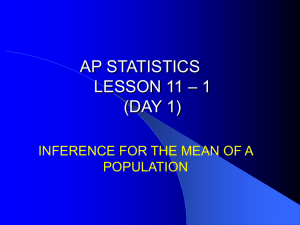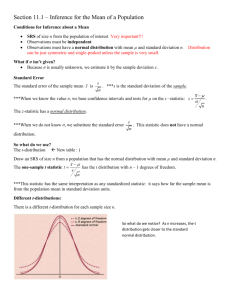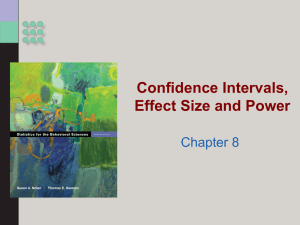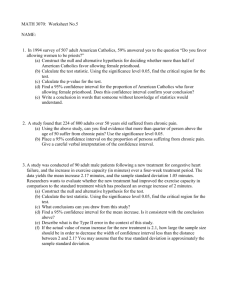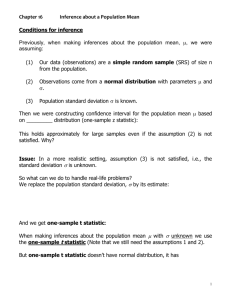Confidence level C The success rate of the method
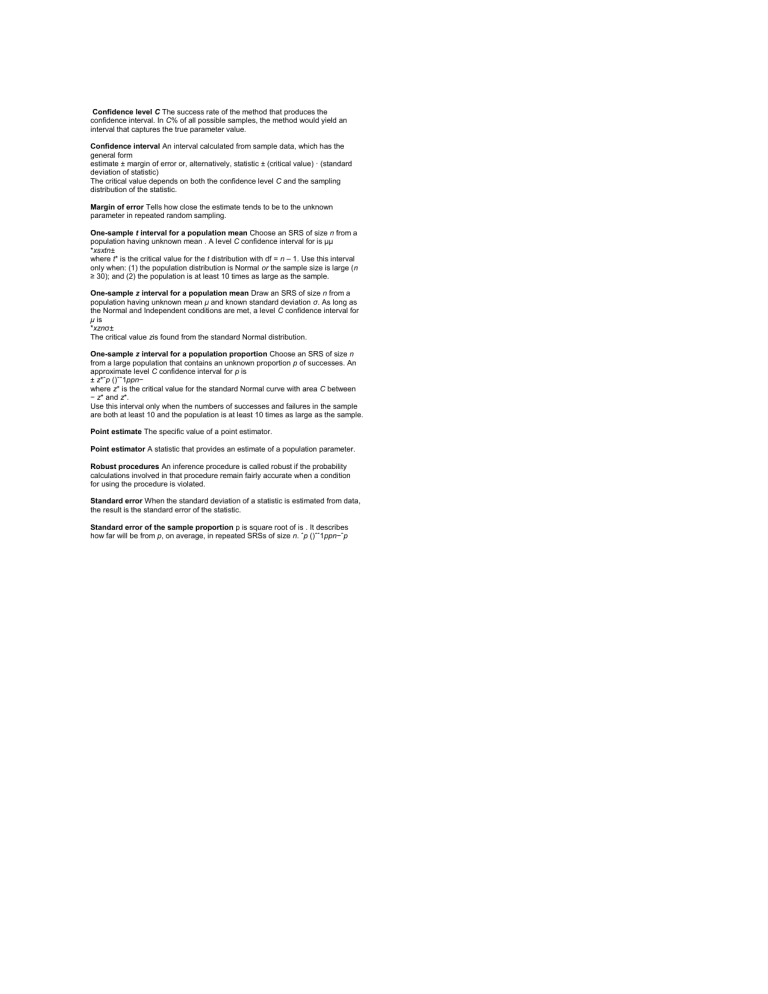
Confidence level C The success rate of the method that produces the confidence interval. In C % of all possible samples, the method would yield an interval that captures the true parameter value.
Confidence interval An interval calculated from sample data, which has the general form estimate ± margin of error or, alternatively, statistic ± (critical value) · (standard deviation of statistic)
The critical value depends on both the confidence level C and the sampling distribution of the statistic.
Margin of error Tells how close the estimate tends to be to the unknown parameter in repeated random sampling.
One-sample t interval for a population mean Choose an SRS of size n from a population having unknown mean . A level C confidence interval for is μμ
* xsxtn
± where t * is the critical value for the t distribution with df = n – 1. Use this interval only when: (1) the population distribution is Normal or the sample size is large ( n
≥ 30); and (2) the population is at least 10 times as large as the sample.
One-sample z interval for a population mean Draw an SRS of size n from a population having unknown mean μ and known standard deviation σ . As long as the Normal and Independent conditions are met, a level C confidence interval for
μ is
* xzn σ±
The critical value z is found from the standard Normal distribution.
One-sample z interval for a population proportion Choose an SRS of size n from a large population that contains an unknown proportion p of successes. An approximate level C confidence interval for p is
± z *ˆ p ()ˆˆ1 ppn − where z * is the critical value for the standard Normal curve with area C between
− z * and z *.
Use this interval only when the numbers of successes and failures in the sample are both at least 10 and the population is at least 10 times as large as the sample.
Point estimate The specific value of a point estimator.
Point estimator A statistic that provides an estimate of a population parameter.
Robust procedures An inference procedure is called robust if the probability calculations involved in that procedure remain fairly accurate when a condition for using the procedure is violated.
Standard error When the standard deviation of a statistic is estimated from data, the result is the standard error of the statistic.
Standard error of the sample proportion p is square root of is . It describes how far will be from p , on average, in repeated SRSs of size n
. ˆ p
()ˆˆ1 ppn
−ˆ p
Standard error of the sample mean x is where is the sample standard deviation. It describes how far will be from , on average, in repeated SRSs of size n . x xsn xs x
μ
The t distributions; degrees of freedom Draw an SRS of size n from a large population that has a Normal distribution with mean
μ and standard deviation
σ
.
The statistic has the t distribution with degrees of freedom df = n
– 1. This statistic will have approximately a distribution as long as the sampling distribution of is close to Normal.
Standard error of the sample mean x is where is the sample standard deviation. It describes how far will be from , on average, in repeated SRSs of size n . x xsn xs x
μ
The t distributions; degrees of freedom Draw an SRS of size n from a large population that has a Normal distribution with mean
μ and standard deviation
σ
.
The statistic has the t distribution with degrees of freedom df = n
– 1. This statistic will have approximately a distribution as long as the sampling distribution of is close to Normal.
